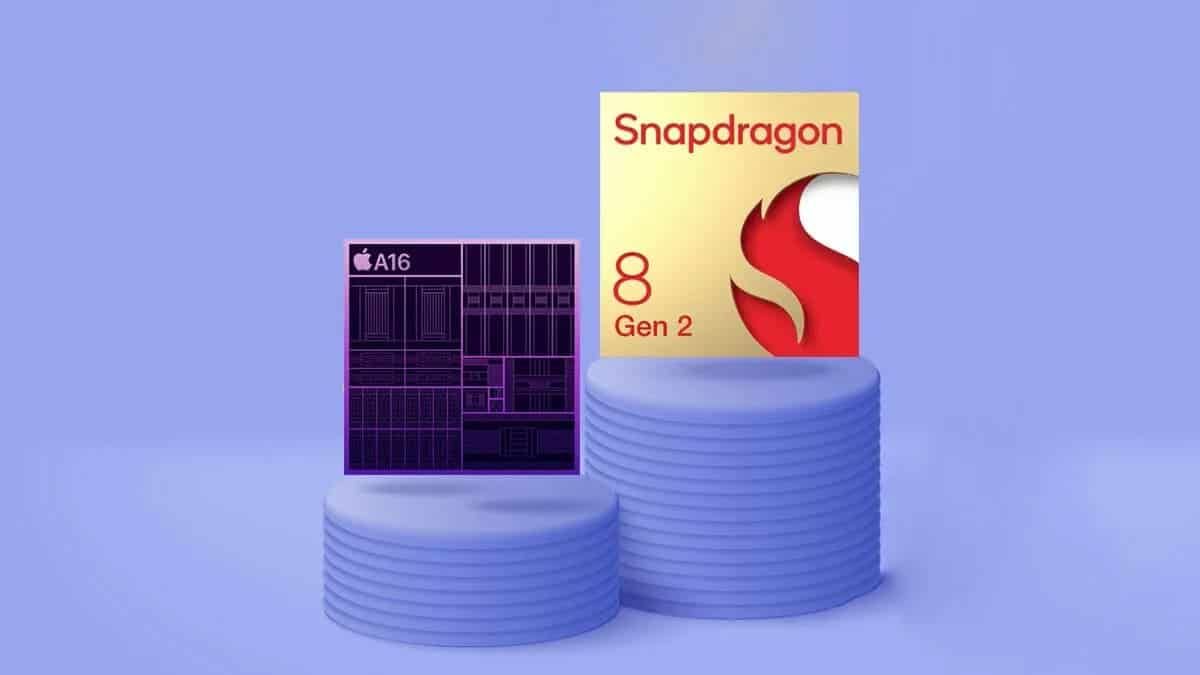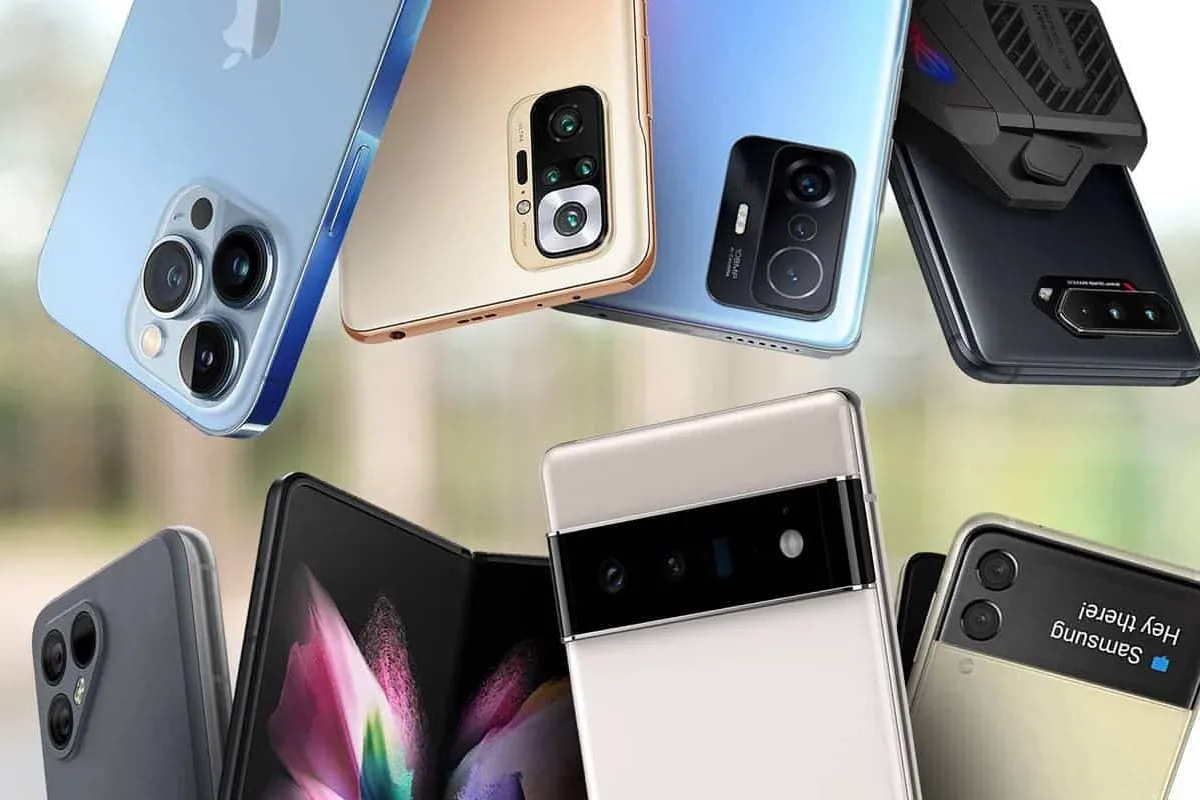We had only one answer for the question "what is the most powerful mobile?" for years: the most recent iPhone. Apple has raised the bar each year by creating its own chips, leaving Android makers far behind.
Mostly Qualcomm is to blame. It's obvious that the manufacturer chose to take it easy and chose incremental upgrades rather than the revolution the sector sorely needed. So it's appropriate that Qualcomm brings an end to this scenario.
Android smartphones will benefit from the new Snapdragon's power

Thanks to the new Snapdragon 8 Gen 2, which was introduced last November, it appears that the top Android phones will finally be as powerful as the most recent iPhone models after all these years. The first smartphones running it are now available on the market, and initial reviews are excellent.
According to tests conducted on a Xiaomi 13 by @Golden Reviewer and posted on Twitter, the new Qualcomm processor offers a significant improvement over the Snapdragon 8 Gen 1 and even the Snapdragon 8+ Gen 1 chips, which increased efficiency in several areas.
Of course, you might be worried that this would result in shorter battery life and greater heat produced by the processor, but research reveals that despite being 10% more powerful, the Snapdragon 8 Gen 2's most potent cores still operate at a rate equivalent to that of the 8+ Gen 1.
The most serious criticism that can be leveled at Qualcomm is that it appears to have concentrated primarily on improving those four "big cores," which are activated when we need high performance, such as during demanding applications or video games. The efficient cores have hardly changed since the previous generation.
However, as Max Weinbach emphasizes, the crucial factor is that this power bump places Apple's most recent chip within easy reach. Gaming should go quite smoothly because the Snapdragon 8 Gen 2 can rival the Apple A16 found in the iPhone 14 Pro in terms of GPU performance. It is roughly equal in terms of CPU performance.
The fact that the future appears promising may be the best development. Apple is rumored to be changing its strategy with the next generation iPhone, putting an emphasis on efficiency over power, and Qualcomm has an advantage with Nuvia, the chipmaker formed by former Apple workers that it purchased in early 2021 and will have an impact on its future chips. Therefore, it wouldn't surprise us if Android phones soon outperformed iPhones in terms of power.
Qualcomm Snapdragon 8 Gen 2 (SM8550) specifications
- 1 x Kryo Prime CPU (Arm Cortex-X3 based) at up to 3.2GHz, 4 x Kryo Performance CPUs (2 x Arm Cortex-A715 and 2 x Arm Cortex-A710 based) at up to 2.8GHz, 3x Kryo Efficiency CPUs (Arm Cortex-A510 based) at up to 2GHz, ARMv9 architecture
- 4nm Process Technology
- Built-in Qualcomm Snapdragon X70 5G modem RF system
- 5G speeds of up to 10Gpbs down, 5G mmWave and sub-6 GHz, standalone (SA) and non standalone (NSA) modes. MmWave: 1000 MHz bandwidth, 8 carriers, 2×2 MIMO, Sub-6 GHz.
- Qualcomm Adreno next gen GPU, Vulkan 1.3 API support, HDR gaming (10-bit color depth, Rec. 2020 color gamut), API Support: OpenGL ES 3.2, OpenCL 2.0 FP, Vulkan 1.3, Real-time Hardware-Accelerated Ray Tracing
- Up to 36 MP triple camera, Up to 64+36 MP dual camera, Up to 108 MP single camera with ZSL. Up to 200MP single camera, Qualcomm Spectra Image Sensor Processor (Cognitive 18-bit triple ISP)
- Rec. 2020 color gamut photo and video capture, Up to 10-bit color depth photo and video capture. 8K HDR Video Capture + 64 MP Photo Capture
- On-Device Display Support: 4K at 60 Hz / QHD+ at 144 Hz, Maximum External Display Support. Up to 4K @ 60 Hz, 10-bit color depth, Rec. 2020 color gamut, HDR10 and HDR10+, Demura and subpixel rendering for OLED Uniformity
- Qualcomm Hexagon Processor, Fused AI Accelerator, Hexagon Tensor Accelerator, Hexagon Vector eXtensions, Hexagon Scalar Accelerator. Support for mix precision (INT8+INT16), Support for all precisions (INT4, INT8, INT16, FP16), Micro Tile Inferencing
- Support for LP-DDR5x memory up to 4200 MHz
- Wi-Fi 7 Peak speed: 5.8 Gbps, Wi-Fi 6E, 802.11ax (Wi-Fi 6) Multi-gigabit, Integrated 802.11ac 2×2 (2-stream) MU-MIMO, 2.4 GHz, 5 GHz and 6GHz, Bluetooth 5.3, LE Audio, Dual Bluetooth antennas
- Bluetooth audio: Snapdragon Sound Technology with support for Qualcomm aptX Voice, aptX Lossless, aptX Adaptive, and LE audio, NFC
- GPS, Glonass, BeiDou, Galileo, QZSS, NavIC capable, Dual Frequency GNSS (L1/L5), Sensor-Assisted Positioning. Urban pedestrian navigation with sidewalk accuracy, Global freeway lane level vehicle navigation
- USB 4.0, USB-C
- Qualcomm Quick Charge 5 technology






Place comments
0 Comments
You are currently seeing only the comments you are notified about, if you want to see all comments from this post, click the button below.
Show all comments